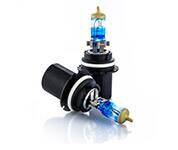What Are Deployment Services?
https://www.deployeveryday.com/python-idioms-go/
Deployment Services are software-based solutions that aid in the deployment and implementation of new applications or infrastructure. They can be used to support hardware or software acquisition tuning, configuration, staging installation, as well as interoperability tests.
Benefits of application deployment include increased security, simplified management, and better insight into user behavior. App deployment also makes it easier to complete complex task that can be time-consuming and costly such as software updates.
HP provides a full range of deployment services that will assist your company in speeding up the process, whether you are planning to set up new servers or migrate existing ones. From staging and delivery of devices to setup, installation and data migration, our deployment services can assist you in getting up and running quickly and efficiently with minimal downtime.
Windows Deployment Service – Provides centralized deployment of a network-based operating system to computers running bare metal. It is the successor to Remote Installation Services (RIS). WDS utilizes disk images to deploy virtually any OS.
Microsoft Windows Server 2008 R2 or later utilizes the Windows Image Format (WIM) for instance it creates images that can be used to install remotely. A Windows image is a virtual environment that boots the computer and allows for the installation of the operating system. The pre-boot environment is customized and extended by the administrator in order to accomplish other tasks like installing additional drivers.
To make use of WDS the environment needs to be configured to allow local network or Internet access. The environment should also have an Windows Deployment Services Server role installed on an appropriate server. This includes a DHCP server.
Microsoft provides a number of tools for WDS that can be used to manage the deployment server as well as build, capture and apply images, including imagex, dism and wdsutil. These tools can be utilized on the same server as the WDS server or on a separate server. The imagex command-line tool can create either an individual WIM structure, or a deduplication of WIM. It can be used on a network share or mapped drive. The wdsutil utility is used to manage WDS without the graphic interface and to add the images that have been captured to the repository.
Virtual Machines – Can be created to act as client machines in the process of creating and testing Windows deployment images. Using virtual machines reduces the performance of the Trivial File Transfer Protocol download phase. This is particularly true if the virtual machine is not capable of handling a full boot loader.
Multiple WDS Servers – Can be deployed to provide redundancy and fault tolerance. You can install a single WDS server to manage a large number of WIM images, or install multiple WDS servers in an internet network to increase availability and offer fault tolerance.
A Windows image is created with ImageX or a third-party tool and then distributed via the Internet to other WDS servers. The image is downloaded to local servers, remote server or Hyper-V virtual machine.
Ron’s supervisor gives him the task to deploy the latest Windows 7 OS at the company’s fifty branch offices. He wants to do it remotely, so he doesn’t need to travel to branch sites. However, company policy stipulates that only one DHCP is allowed on corporate network, and that’s at the Tooth City Office.


























